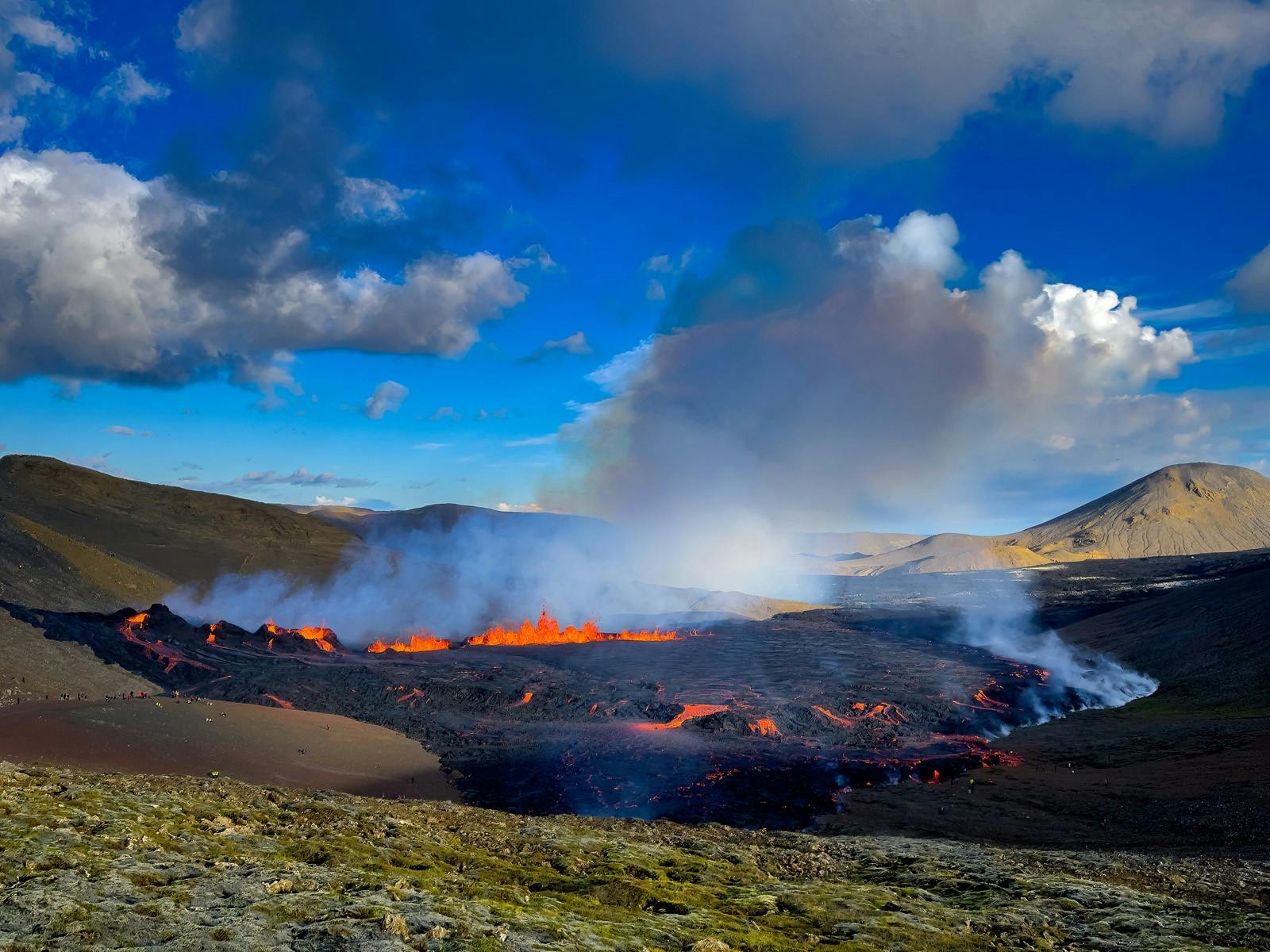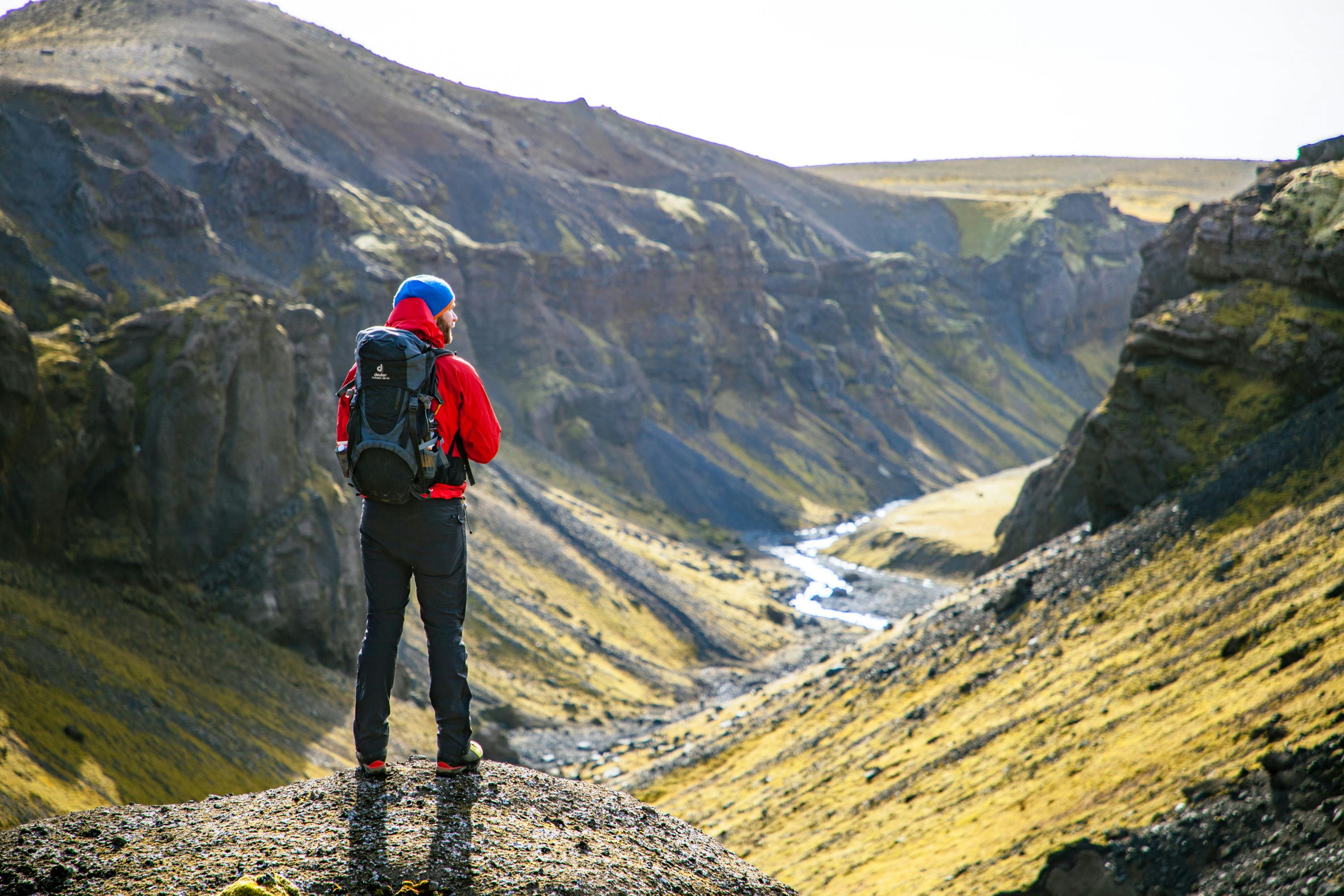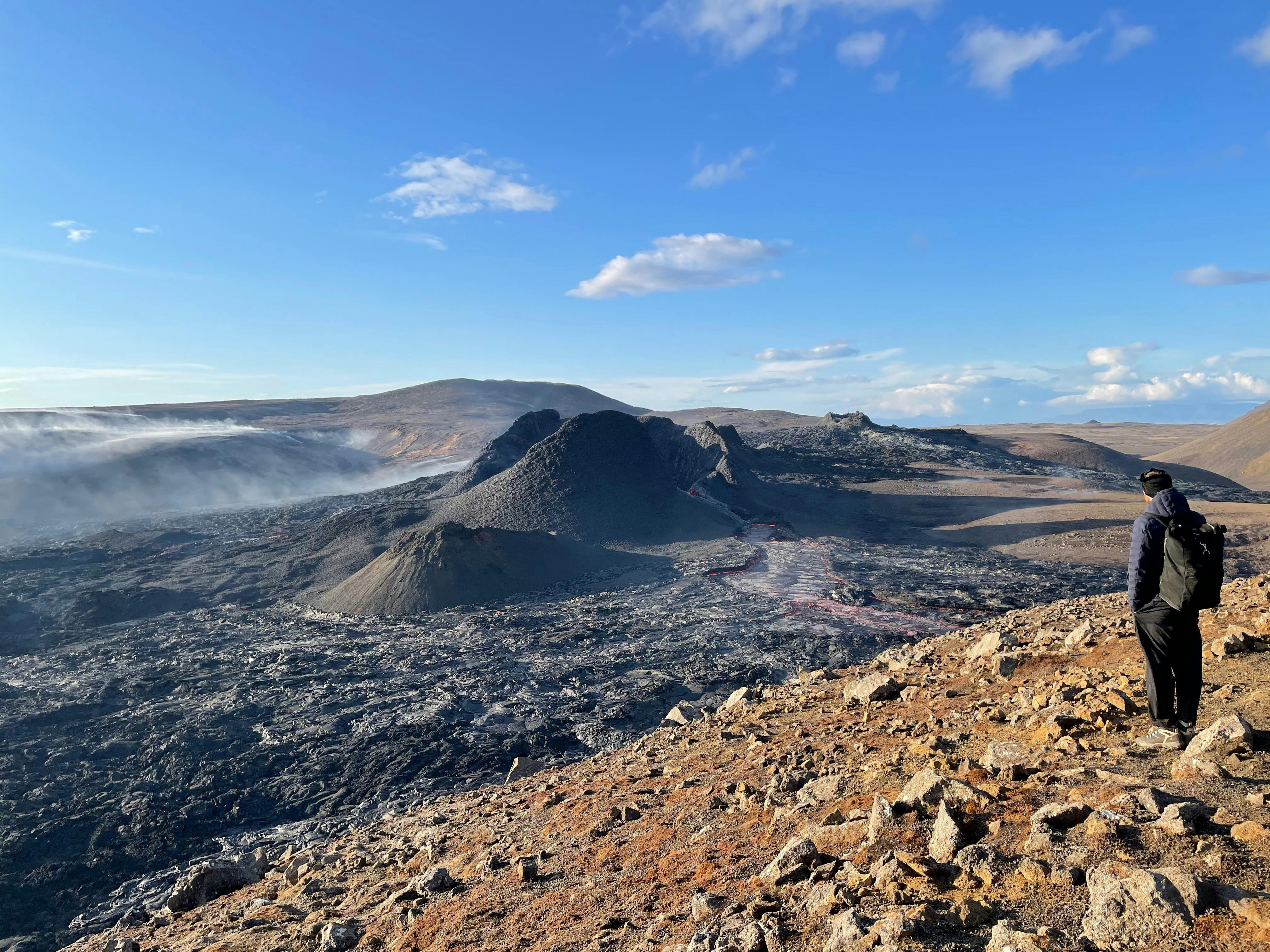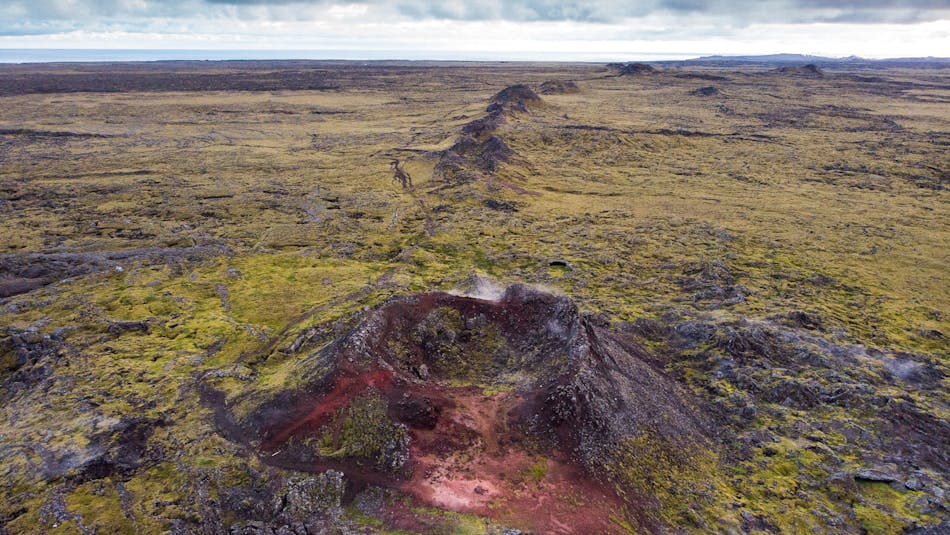
Since 2021, Iceland's Reykjanes Peninsula has been experiencing volcanic eruptions. Travel to Iceland has been open and safe throughout this seismic activity as the eruptions are localized.
Seismic activity on the Reykjanes Peninsula
Latest update: New volcanic eruption on the Reykjanes Peninsula
A new fissure eruption started on the Reykjanes Peninsula by Hagafell and Stóra-Skógfell at 8:23 PM on March 16. This marks the fourth eruption in the area since December of 2023. Air traffic to and from Iceland is operating normally, and Iceland remains a safe destination. Read all current news on the eruption here
Volcanic activity on the Reykjanes Peninsula: What you need to know
Since 2021, the Reykjanes Peninsula has witnessed a surge in seismic activity, including several volcanic eruptions. Despite this, Iceland has remained a safe and open destination for travelers.
Monitoring and Preparedness
A global team of geoscientists meticulously monitors the area, backed by Iceland's advanced volcanic preparedness and real-time surveillance systems. Our priority is safety, ensuring that life and tourism in Iceland proceed smoothly. For a detailed look into the recent volcanic activities and their safety implications, Dr. Matthew Roberts from the Icelandic Meteorological Office offers insights through an informative video.
Discover the Reykjanes Peninsula
Iceland's Reykjanes Peninsula offers a fascinating glimpse into the Earth's inner workings. This region is a geologic wonderland where the North American and Eurasian tectonic plates pull apart, creating a dynamic landscape filled with volcanic activity, hot springs, and rugged lava fields—old and new. As these plates drift apart, magma from deep within the Earth's mantle rises to the surface, leading to eruptions that form new land and shape the peninsula's dramatic scenery. This geological hot spot is also responsible for tremendous benefits, such as the Svartsengi geothermal power plant, the Blue Lagoon, and many ancillary businesses powered by sustainable electricity.
Geologists can see that these eruptive processes have happened many times in the geological record of Reykjanes, and there is no indication that they will differ in the future. On March 19, 2021, a volcano erupted on the Reykjanes peninsula in the remote Geldingadalur Valley – the first eruption in over 800 years. This "scenic" eruption was a huge draw for locals and tourists alike, and there was no damage to people or infrastructure. For approximately six months, the volcano would periodically shoot tremendous fountains of lava from its crater. There were subsequent fissure eruptions nearby in 2022 and 2023 that lasted roughly two weeks. In October 2023, seismic activity shifted west toward the Svartsengi Power Plant. On November 10, 2023, seismic activity markedly increased, and the Icelandic Department of Civil Protection and Emergency Management decided to evacuate Grindavík.
Benefits of volcanoes
Iceland's unique geology offers tremendous benefits, from vast geothermal energy resources for space heating and generating electricity. This sustainable energy use makes Iceland one of the least polluted countries globally. Volcanic activity provides resources for spas and wellness products that are very popular in Iceland and draw many people to the country. Moreover, Iceland's geothermal energy allows the government to grow produce in greenhouses nationwide.
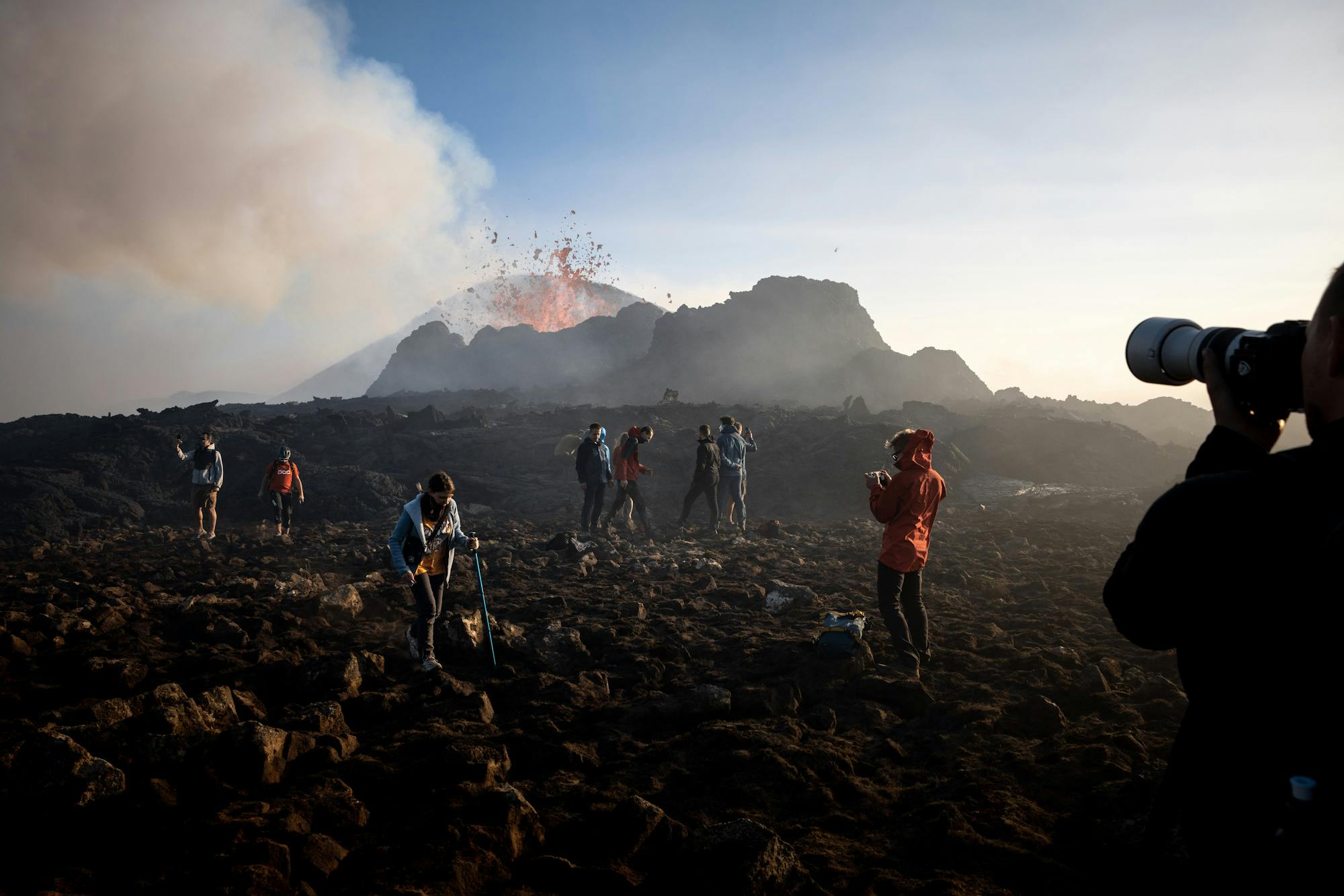
Volcanic eruption at Litli-Hrútur in July, 2023
Living with Volcanoes
In Iceland, volcanoes are a part of everyday life, contributing positively through geothermal energy, fertile ash, and unique landscapes. Despite the frequent eruptions, their impact is usually in remote areas, away from people and infrastructure, and does not disrupt air travel. Iceland's location on the Mid-Atlantic Ridge is above a hot spot (a mantle plume in geological terms), ensuring continuous volcanic activity and significantly shaping its natural beauty and resources.
Since the end of the last ice age, about 10.000 years ago, a third of all lava that volcanos have produced on the Earth's surface has erupted in Iceland. The most significant lava flow in a single eruption on the planet during the Holocene Period (11,700 years ago – present day) is The great Þjórsá lava that erupted around 8,600 years ago and is estimated to be 26 km3. To provide some perspective for those who recall the May 18, 1980, Mount St. Helens eruption in Washington State erupted 2.79 km3.
This same geological activity is also responsible for some of the most dramatic features of Icelandic nature. The mountainous landscapes, black lava fields, black sand beaches, geothermal pools and geysers, and even glaciers result from a continuous interplay between volcanic activity and the natural elements.
Read more about the latest eruptions in Iceland
Commitment to safety
Public safety is our utmost concern. With 32 active volcanic systems, Iceland meticulously monitors seismic activity to address any signs of unrest preemptively. Our infrastructure is designed to withstand natural disasters, ensuring that serious incidents are rare.
For more information and updates on seismic activity, road conditions, safety advisories, and news, please refer to:
More information:
- The Icelandic MET office: Latest information on the seismic activity and development of events.
- The Icelandic Road Administration: Information on road conditions and closures in the Reykjanes region
- Safetravel: Updates on safety
- The Icelandic National Broadcasting Service: News coverage
- Visit Reykjanes: Updates from the region

